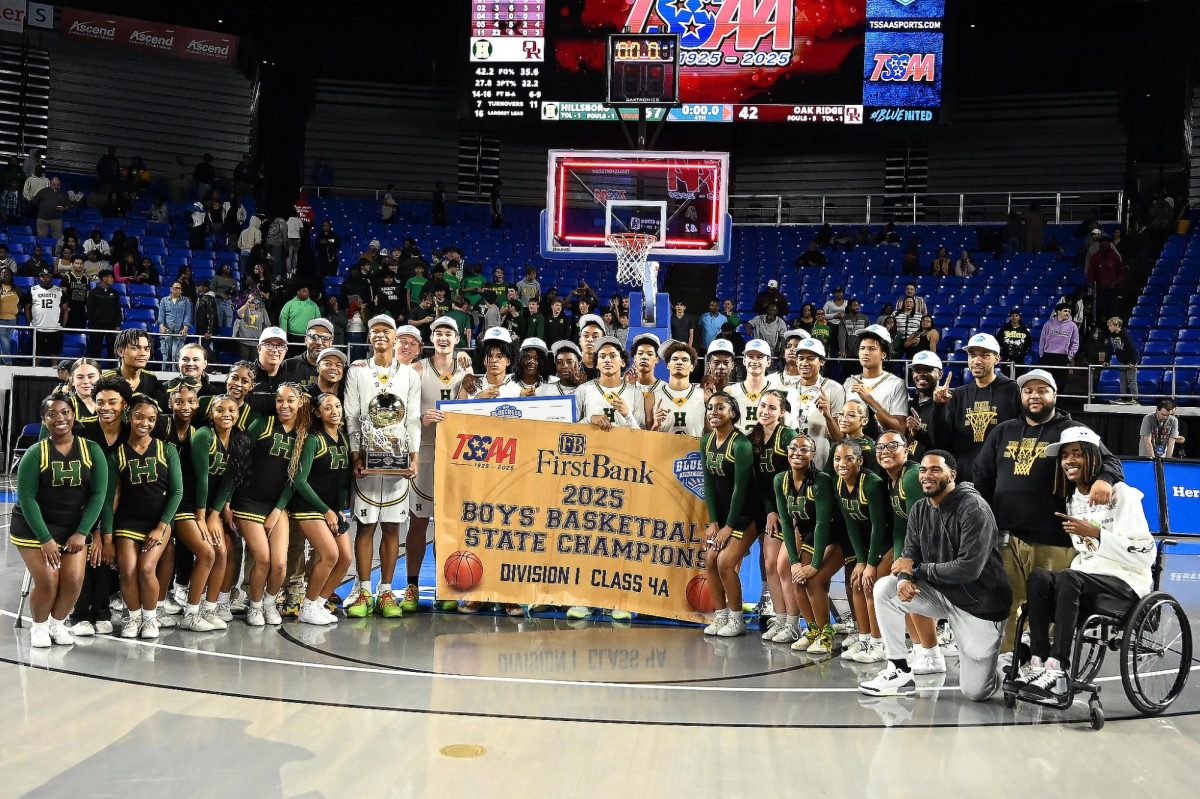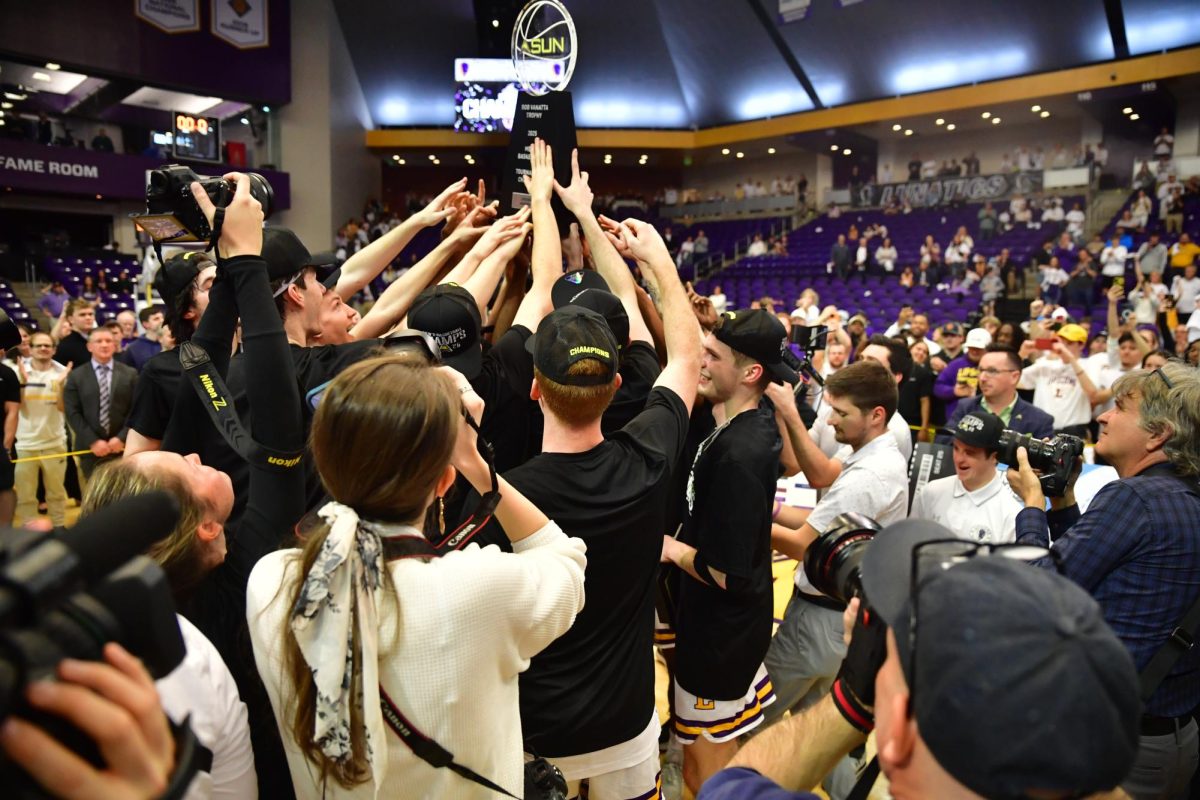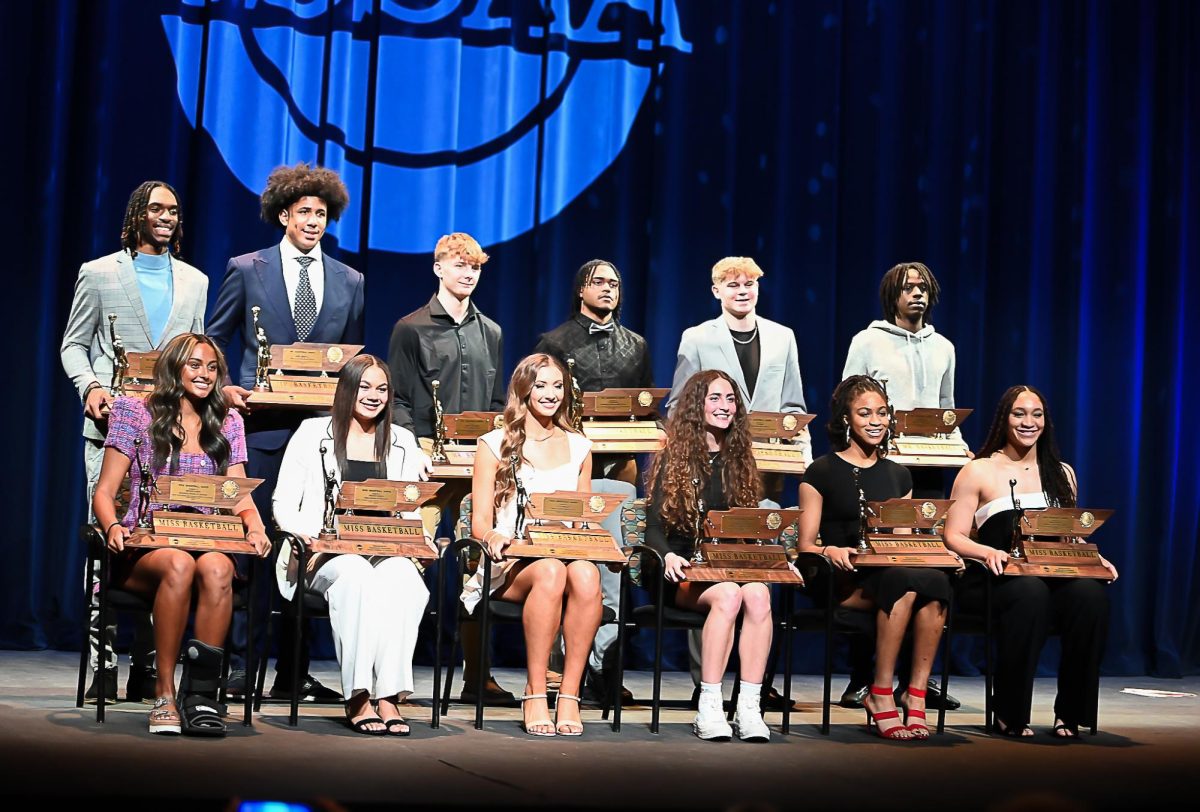Editor’s Note: March is both the month of women and athletic trainers. The Hillsboro Globe chose to honor Amber Montgomery and Caitlyn Bailey for their devoted work in sports health and athletic training. Both careers have been predominately a male career, however, athletic trainers such as Ms. Bailey and Ms. Montgomery are helping to eliminate this stereotype.
Keeping Athletes in the Game
In the realm of school sports, the presence of an athletic trainer is not merely an added luxury but a vital necessity. These professionals play a crucial role in safeguarding the well-being of student-athletes, contributing to their overall physical health, and enhancing the sports culture within educational institutions.
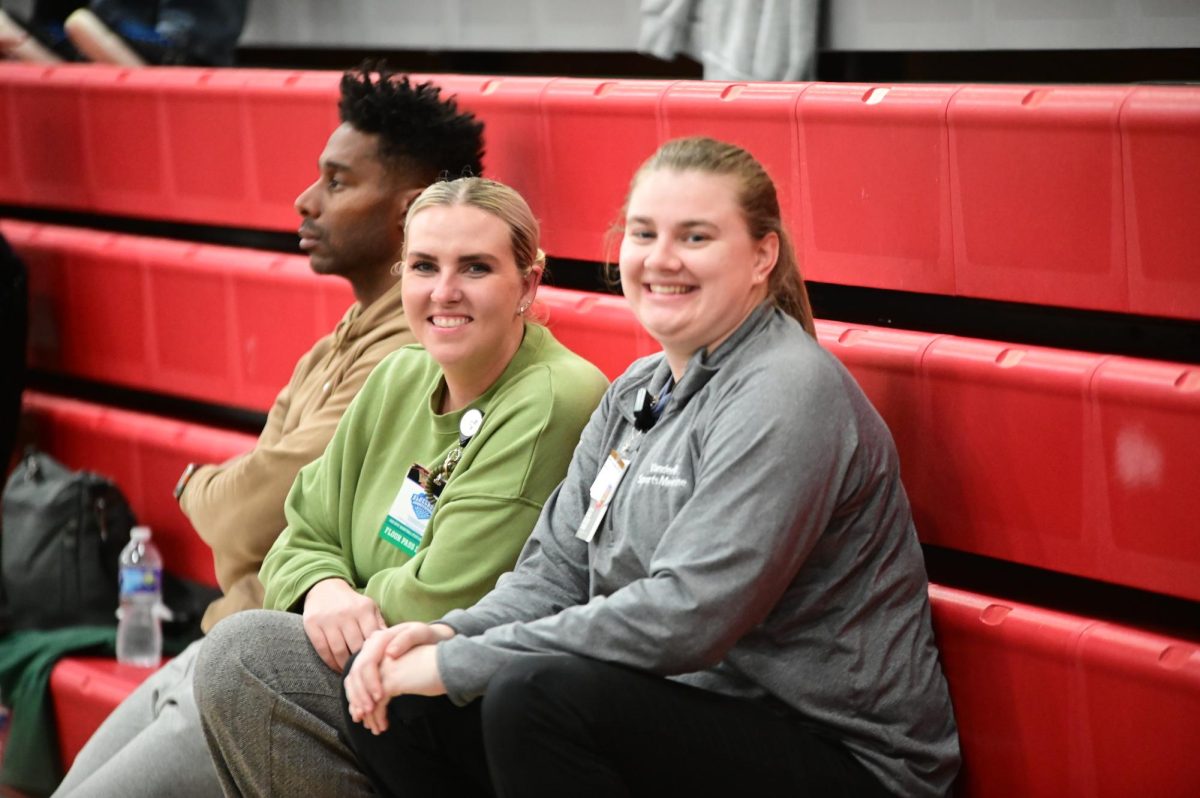
Amber Montgomery is the Hillsboro High School athletic trainer, and it is her first year with the Burros. Ms. Montgomery has her master’s in science and has both her LAT and ATC. An LAT (Licensed Athletic Trainer) is an individual who is certified by the state and can only practice in that state. An athletic trainer who has earned his or her ATC (Athletic Trainer Certification) is certified by a Board of Certification and can apply for licensure in any state that regulates athletic training and practice in that state. They are not limited to practicing athletic training in only one state. Both licensures are rigorous and require more than four years of college.
As Hillsboro’s athletic trainer, Ms. Montgomery is responsible for every TSSAA sport that is offered. These include football, volleyball, girls’ soccer, boys’ and girls’ cross country, wrestling, boys’ and girls’ basketball, bowling, boys’ soccer, boys and girls track and field, tennis, baseball, and softball. She can often be found running from one sport on campus to another sport, checking in on each team that is playing at home.
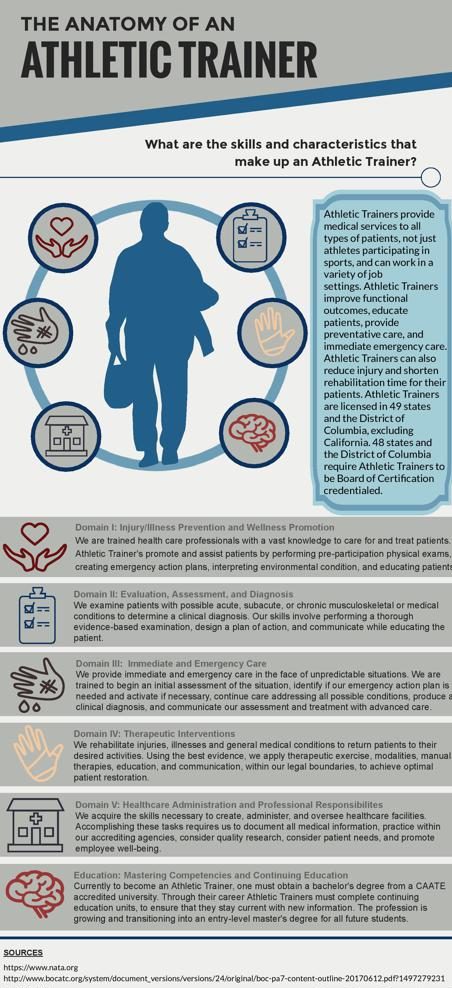
So, what exactly does an athletic trainer do when working with high school athletes?
Injury Prevention and Health Information
Athletic trainers are trained to identify potential injury risks and implement preventive measures. Their expertise helps in creating tailored conditioning programs, reducing the likelihood of injuries during practice and competitions. Moreover, having an athletic trainer on-site ensures prompt and effective care in the event of an injury. Immediate attention not only aids in a quicker recovery but also prevents the exacerbation of injuries.
Beyond physical care, athletic trainers serve as educators, imparting valuable knowledge on topics such as nutrition, hydration, and proper warm-up techniques. This educational aspect extends beyond the playing field, promoting a culture of health and well-being among student-athletes. Students learn habits that can positively impact their lifelong physical health.
Concussion, Cardiac Management and Rehabilitation:
With the increasing awareness of concussions in sports, having an athletic trainer becomes paramount. These professionals are well versed in concussion protocols, ensuring that any head injuries are promptly identified and managed. This proactive approach not only protects the immediate health of student-athletes but also mitigates the potential long-term consequences associated with untreated concussions.
Athletic trainers play a pivotal role in addressing cardiac emergencies, acting as first responders in critical situations. Their comprehensive training equips them to quickly assess and initiate life-saving measures when an athlete or individual experiences a cardiac event. Athletic trainers are skilled in cardiopulmonary resuscitation (CPR) and the use of automated external defibrillators (AEDs), enabling them to provide immediate assistance until further medical help arrives. The speed and precision with which they respond can significantly impact the outcome of a cardiac emergency, making their presence on the field, court, or during physical activities crucial in ensuring a rapid and effective response that can potentially save lives.
When injuries do occur, athletic trainers play a key role in the rehabilitation process. They work closely with students to design and implement rehabilitation programs, guiding them through the recovery journey. This not only facilitates a swifter return to sport but also helps prevent recurring injuries by addressing underlying issues.
Team Culture:
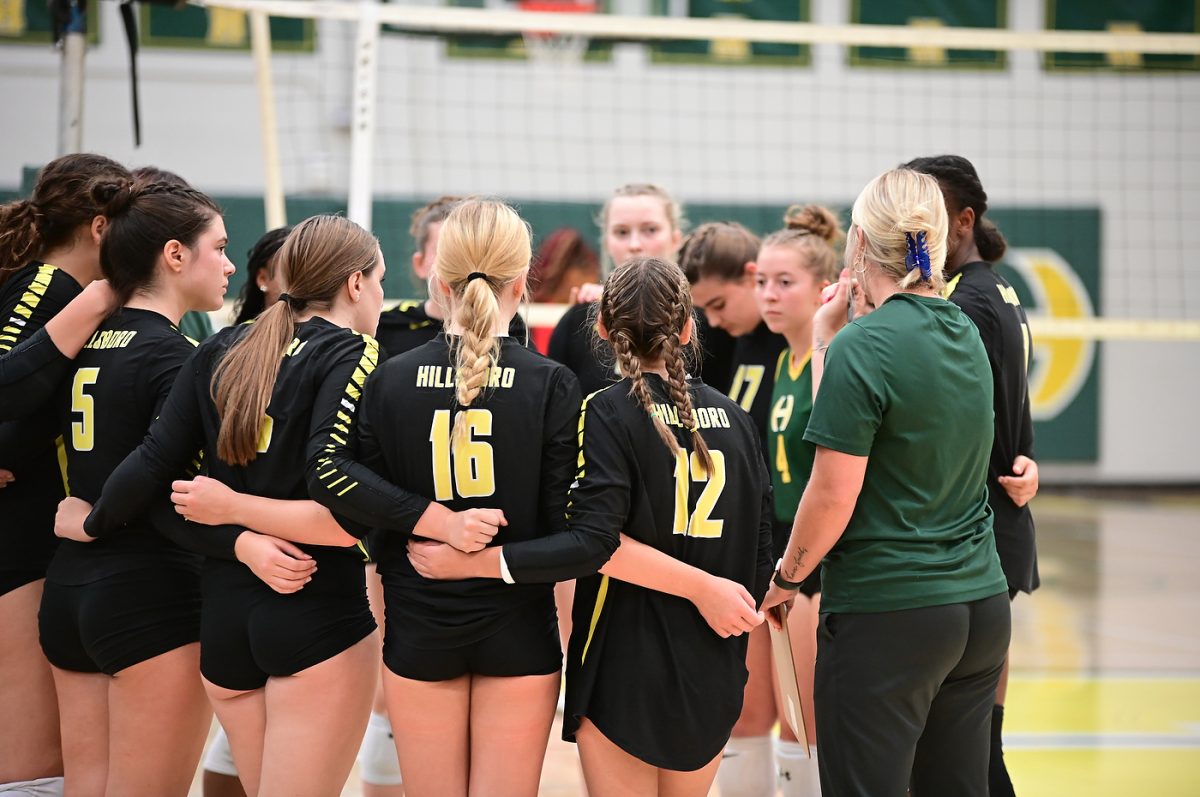
Athletic trainers serve as integral members of the sports team’s support system. They collaborate with coaches, physicians, and other healthcare professionals to ensure a holistic approach to the well-being of student-athletes. This multidisciplinary collaboration fosters an environment where the health and performance of athletes are prioritized.
Hillsboro Globe (HG): What qualifications are required to becoming an athletic trainer, and how do you go about attaining that certification?
Amber Montgomery (AM)”In order to become a certified athletic trainer, you must get a master’s degree from a CAATE approved program and pass a national board of certification test. “
HG: How do you asses if a player is ready to continue in a game?
AM “An evaluation will be done to determine if an athlete can continue to play. These evaluations incorporate manual muscle testing, special orthopedic tests, vitals, concussion testing, etc. “
HG: What is the usual routine of a trainer during a football/basketball game?AM “Usually I arrive when school lets out and I will see any athletes that need to do rehab or have an evaluation. I will just hang around until about an hour before the athletes have to be on the field or the court, at which point I will start taping. When taping is complete I will start getting all of my stuff set up and my kit packed/restocked. Then, right before the game I will meet with the officials and any other medical personnel and go over the emergency action plan. During the game I watch for injuries and take care of anyone who goes down. After the game I clean up and check on anyone that got hurt during the game and give out ice to those who need it.”
HG: Are there certain Injury’s you cannot attain to during a game?
AM “Athletic trainers can handle a wide variety of injuries and we are equipped to handle almost any emergency until transport arrives if it is needed. We have an emergency action plan for all sorts of emergencies.”
HG: Describe the process of how you help players with minor sprains during a game.
AM “With a minor sprain I will evaluate the athlete and determine whether I think they can continue to play or not. If they can and want to, I will usually tape them up heavily and have them move around in it before sending them back out. If they can’t continue to play, then I will pull them and give them ice.”
AM “We are very often looked over or thought of as someone who wants to take you out of the game. I promise we want you to play just as much as you want to. We are here to keep you safe and in the sport, you love and sometimes that means having to take a step back. We are here to help you and always have your best interest in mind.”
Students at Hillsboro High School can enroll in the Academy of Global Health Science as early as a sophomore and choose the Sport and Human Performance pathway to earn industry certifications that enable students to work ahead if they are interested in becoming an athletic trainer.



